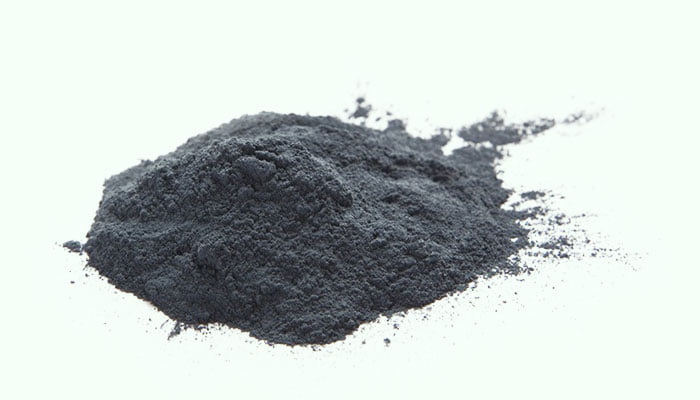What Is Qing Dai
Qing Dai also known as Indigo Naturalis is a powder or agglomerate made from the leaves and stems and leaves of Strobilanthes cusia, Polygonum tinctorium, and Isatis indigotica. It is a relatively practical and commonly used Chinese herbal medicine and dye, which first appeared in <Yao Xing Lun> (Discourse on the Properties of Pharmaceutical Substances) in the 7th century AD.
Qing means “Indigo blue”. Indigo blue is extracted from the indigo plant but is bluer than the plant it comes from. In China, this sentence means “the pupil learns from and outdoes his teacher”.
Strobilanthes cusia is a perennial semi-shady plant of the Acanthaceae family. It often grows in wet shady land at an altitude of 600-1,200 meters. It is distributed in China, Bangladesh, Northeast India, Myanmar, Himalayas, and Indochina Peninsula.
Polygonum tinctorium is an annual herb of the Polygonaceae family. It is distributed in Japan, India, China, and Europe.
Isatis indigotica is a biennial herb of the Cruciferae family. It is native to China and is now distributed in Hebei, Jiangsu, Anhui, and Shaanxi provinces of China.
In the autumn of each year, people gather the leaves and stems of Strobilanthes cusia, Polygonum tinctorium, or Isatis indigotica, soak them until they rot, then add lime milk, stir them, remove the surface foam, drain the excess water, dry them in the sun, and make them into Chinese herbal medicines.
The chemical composition of Qing Dai is similar to that of Da Qing Ye (Folium Isatidis) and Ban Lan Gen (Radix Isatidis). It contains indigotin, indirubin, isatin, trptanthrin, palmitic acid, qingdainone, β-sitosterol, daucosterol, amino acids, and inorganic salts.
According to <Compendium of Materia Medica>, the medicinal nature of Qing Dai is relatively cold, with a salty taste. It has a certain therapeutic effect on the pathological changes of the liver and lung meridians.
In traditional Chinese medicine, it is often used to clear heat and remove toxins, cool blood and eliminate maculae, clear liver and purge fire, arrest convulsion, treat acute pelvic inflammation, esophageal and cardiac cancer obstruction, ulcerative colitis, jaundice hepatitis, chronic active hepatitis, chronic myeloid leukemia, epilepsy, nasal vestibulitis, gastrointestinal bleeding, bedsores, orchitis, anal eczema, and senile vaginitis.
About 200 kinds of traditional Chinese medicine prescriptions contain it, such as Fu Fang Qing Dai Wan, Qian Jin Zhi Dai Wan, and Qing Jing San.
Benefits
- Anti-inflammation, anti-virus, and anti-tumor.
- Scavenging hydroxyl radicals and inhibiting the oxidative activity of oils and fats.
- Promoting blood coagulation and improving immunity.
- Reducing the damage of CCL4 to liver tissue and protecting the liver.
- Repairing intestinal mucosal damage and improving ulcerative colitis.
- Clearing heat and eliminating maculae caused by warm toxins.
- Cooling blood and treating hematemesis and epistaxis caused by blood heat.
- Removing heat toxins and relieving sore throat caused by heat toxins.
- Clearing liver fire, treating chest pain, cough, and bloody sputum caused by the liver-fire attacking stomach.
- Purging lung heat, eliminating thick yellow phlegm, and relieving cough caused by lung heat.
- Treating infantile convulsions, epilepsy caused by summer-heat.
- Treating Hashimoto thyroiditis, glomerulonephritis, acute pelvic inflammation, jaundice hepatitis, and chronic active hepatitis.
- Inhibiting Staphylococcus aureus, Bacillus anthracis, Shigella dysenteriae, Vibrio cholerae, Helicobacter pylori, Candida albicans.
- Indirubin is an effective drug for the treatment of chronic myeloid leukemia. Both it and its derivatives can promote the apoptosis of tumor cells.
- The topical application of it can relieve pain and treat contact dermatitis caused by mumps, skin ulcers.
Combinations
- It can be used in combination with Bing Pian (Borneol), etc. to relieve mumps, and skin ulcers caused by heat toxins.
- It can be used in combination with Sheng Di Huang (Radix Rehmanniae), Shi Gao (Gypsum), Zhi Zi (Fructus Gardeniae), etc. to treat maculae caused by warm toxins.
- It can be used in combination with Sheng Di Huang (Radix Rehmanniae), Mu Dan Pi (Cortex Moutan), Bai Mao Cen (Rhizoma Imperatae), etc. to treat hematemesis and epistaxis caused by blood heat.
- It can be used in combination with Ban Lan Gen (Radix Isatidis), Gan Cao (Licorice Root), etc. to relieve a sore throat caused by heat toxins.
- It can be used in combination with Fu Hai Shi (Pumice), Gua Lou Ren (Semen Trichosanthis), Chuan Bei Mu (Fritillaria cirrhosa), etc. to eliminate thick yellow phlegm and relieve cough by lung heat.
- It can be used in combination with Gou Teng (Ramulus cum Uncis Uncariae), Niu Huang (Calculus Bovis), etc. to treat infantile convulsions.
Side Effects
- It has been reported in the literature that a small number of people will cause contact dermatitis, local swelling, and skin itching, etc. after using it.
- A small proportion of patients taking it may cause nausea, vomiting, abdominal pain, diarrhea, or hematochezia.
Precautions and Warnings
- The dosage of Qing Dai should be controlled between 1.5-3g.
- It is insoluble in water and is generally made into powder or pills.
- People who are allergic to Qing Dai should not take it.
- Patients with deficiency-cold or yin deficiency should not take it.
- Patients with no syndromes of excess heat should not take it.
- Patients with stomach-cold should not take it.
- Patients with diarrhea or loose stools should not take it.
